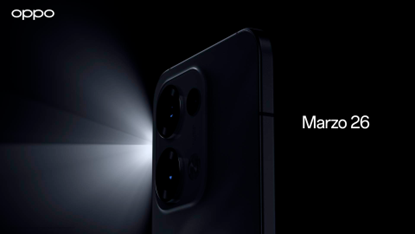
Just as technology and consumer behavior will evolve in unpredictable ways between now and 2020, the ways marketers react to—or perhaps influence?—these new developments will also change in ways we can’t fully imagine now. But if anyone can offer a credible forecast for the near-future trends that will change the way brands connect with people, and the way creative companies will work in the next few years, it’s the people who are most influencing the ad and marketing world right now.
We asked innovators behind some of the companies on this year’s Most Innovative Companies in Advertising/Marketing list, representing key constituencies in the ad landscape—creative agencies, brands, marketing technology startups, and media platforms—for five predictions for the next five years.
While some of their answers spoke to now-familiar trends—the continued growth of mobile and its attendant impact on brand messaging, the continued rise of video and virtual reality, the need for brands to work on a timeline that matches culture, not ad campaigns—their predictions touched on a much wider range of topics, from the shrinking of the product development cycle to data and the place of technology in the marketing continuum (and even a prediction that the banner will work!). That range of topics, in itself, speaks to one, overall, very safe prediction, summed up by Percolate’s Noah Brier: “The complexity of modern marketing is only going to keep increasing.” See more forecasts below.
THE BRANDS
Chris Brandt, chief marketing officer, Taco Bell Corp.
Mobile will enable more personal interactions between brands and people. The number one possession people have is their smartphone and there are more mobile devices than people on the planet. Mobile is the way people interact with friends and brands. The way they look at content is shifting to small screen and successful brands will be able to create a more personalized experience with consumers. Branding is rapidly becoming a two-way conversation as social media has given consumers a voice unlike anything ever seen before. As brands track individual consumer behavior in real-time, they can use it to tailor the experience for that specific person and their specific behaviors on a mass scale.
“Most branded content will come from consumers.”
Transparency is the new black. Consumers expect more information from the brands they use and they expect brands to do good. They want to know who they are and what they stand for. They reward companies that have similar values and ask, “Is the brand good for me (the consumer) and good for we (society as a whole)?” Brands have to be more transparent in a genuine and authentic way—to live and demonstrate their values—they need to walk the talk. If they do, they will win both the hearts and the minds of consumers, which builds sales overnight and the brand over time.
(There will be) a shift from talking at the world to making the world talk. People don’t necessarily want to be marketed to, so brands should look to create engagement and conversations at every consumer touch point. We aim to make everything we do a catalyst for conversation. In terms of our advertising, we want people to ask, “What’s the product? What’s the music? Who’s the artist? What are others saying about it?” Everything must be about the conversation. We want people love our food, care about our brand, and want to share with others.
Rise of video and video sharing. With the rise of mobile, video is in high demand because people love visual storytelling. This includes short form, long form, snippets, streaming, etc. This shift in consumption shatters some of the conventional marketing models. Brands will become more nimble and will see creative and digital agencies morphing into one as ideas need to be cohesively executed across all channels simultaneously. Content will need to be produced more quickly and efficiently which has big implications for the traditional agency/brand relationship.
Most branded content will come from consumers. User generated content will far exceed branded content and brands need to embrace this and accept they aren’t in complete control of their own brand. As such, it’s imperative that brands create a strong identity in the minds and hearts of consumers. At Taco Bell, we look at three approaches to content: Create, Co-Create, and Curate. Create is our own content, co-create is content created in partnership with consumers, and curate is taking the user generated content we like and showing it to more people. The most important ingredient in all of this is authenticity. We are lucky we have passionate fans that do wonderful things like create dresses out of sauce packets—now that is true passion!
Linda Boff, executive director of global brand marketing, General Electric
Virtual reality has become real. It’s a great storytelling platform, particularly for GE, because it gives us another incredible way to show how our big machines perform in extreme conditions.
Connected everything: homes, TVs, cars, jet engines, locomotives, wearables, lights. As marketers, pay particular attention to TV, as the web starts to power your remote control, look for more new players with high-quality content.
New faces to news coverage. Emerging publishers who tailor content, context, and media to younger audiences will surge ahead. Mic, Vice, Fusion, Circa, and Quartz are incredibly well-positioned.
Many of the hottest new media apps will help filter the clutter. By either evaporating or simplifying communication down to a “Yo,” brands will need to behave in a similar manner in these places to stay relevant.
Owning your audience. In a world filled with incredible new tools to cultivate community, customers, consumers, and fans are more accessible than ever. Look for more direct conversations.
THE STARTUP/MARKETING TECH COMPANY

Noah Brier, co-founder Percolate
All channels are “programmatic.” Programmatic rightly gets a bad name, but the core idea of marketing channels being accessible via an input like an API is a really important concept. Right now that’s true of the social channels, and increasingly, the rest of the digital marketing channels, but over the next five years we’ll also see traditional channels like radio and television open themselves up to receive marketing assets programmatically.
“Over the next five years we’ll see technology . . . become a part of the core fabric of marketing itself.”
No more social. As counterintuitive as it sounds, you know a new medium has succeeded when we don’t talk about it anymore. No one mentions going online because we’re all just always connected. The same is increasingly true of social and I expect we’ll see the full transition over the next five years. Facebook now makes more money on advertising than most of the major television networks and it’s showing no signs of letting up. Instagram takes 15-second videos that look a lot like commercials. The fact these are social doesn’t really matter anymore; they’re part of the marketing mix and offer brands the sort of reach they only got a few times a year on television. To that end, social will just be folded into the broader marketing discipline.
The complexity of modern marketing is only going to keep increasing. The job of being a marketer in 2015 is undoubtedly more difficult than it was 20 years ago. The proliferation of channels, markets, and, importantly, incomes in emerging markets around the world, has made marketing a complex discipline. While this is a big challenge, it’s also a good problem to have, as over the next five years marketers will have an ever-growing customer base who, thanks to the growth of smartphones, they will be able to reach directly (many for the first time). All of this will drive more complexity inside and outside organizations, but, when accompanied by growth, that’s not necessarily a bad thing.
Perfect end-to-end attribution (or knowing exactly what messages and actions led someone to buy a product) will remain an industry white whale. We’ve been talking about attribution for at least 80 years in marketing. New technology has given us much better data in some places, for instance, end-to-end attribution in search is a current reality. But for the majority of companies who sell goods in stores will still struggle with end-to-end attribution five years from now. New technologies, especially mobile wallets, offer some compelling possibilities for solving the problem, but at the end of the day, we’re still a long way from being able to tie the billboard exposure in Times Square to the bar of soap being purchased in Target.
Technology moves upstream. If you look at how technology has moved through marketing, it started at the edge (distribution of marketing assets) and has continued to move closer and closer to the actual planning and development of marketing itself. Over the next five years we’ll see technology complete this transition and become a part of the core fabric of marketing itself.
“Good agencies will act like product companies, not service companies.”
THE CREATIVE AGENCIES
Matt Jarvis, chief strategy officer, 72andSunny
Doing good will be good for business. People will reward brands who do good, and punish the ones who don’t. Brand citizenship will move from a defensive, corporate affairs function to a marketing function that drives transactions at scale and creates advantages for companies in the talent wars.
Agencies will become connectors. Brands want to connect with people through artist relationships and artists want brand dollars. Agencies will be the force that brings them together in partnerships that are about more than just pay to play.
Good agencies will act like product companies, not service companies. Service companies aspire to a happy customer and a contract renewal. Product companies innovate quickly and offer better value with each iteration. Agencies who get the Silicon Valley fast iteration memo will lead the next generation.
Big data will get personal. The revolution that has changed how brands go to market will become personalized and allow individuals to use data to pursue their passions and goals. Products and experiences that help people along on this journey will become a much bigger part of our lives. Marketers who participate in this productively and respectfully will form deeper relationships. Those who intrude will get shut out.
Culture will still be king. People will continue to care more about culture than products, so brands that operate on a cultural level will be the winners of the future as they are of the present.
Alex Hesz, director of digital, adam&eveDDB
Metadata versus personal data: The potential value of well-collected, well-interpreted metadata is near limitless. Real-time traffic updates based on signals from mobile phones. Faster and more accurate public health measurement. Supply chain optimization via signals from fridges that reduce food waste. Metadata will make life better. But last year’s National Health Service metadata scandal (“private data sold to insurance firms!”) in the U.K. proved that public understanding is lacking. The fact that personal information is of demonstrably no value within metadata (quite the contrary—the principle being that only once a volume that negates the impact of rogue individual samples is achieved does the data set become of use) was lacking, to the ultimate detriment of all. In the next five years I see our ability to use metadata smartly evolving, but of much more profound importance, I sincerely hope we will see a shift in public understanding that personal privacy and a world made better by metadata can very comfortably coexist.
“Mobile has been in every one of these lists for two decades. And always correctly so. The next wave will matter. Because mobile web access will change the lives of billions of people over the next five years.”
Creative agency capabilities: A bit of navel gazing here, but agency models will change. They have to. The nature of marketing communications is now so much more complex and nuanced that the dry ice and velvet curtain “grand reveal” of a traditional advertising agency is starting to look hilariously outdated. Marketers, emboldened often by their own direct relationships with the big technology companies (fostered at vast effort and expense by the likes of Facebook, Google, and Twitter) are beginning to suspect that in some cases they are driving the marketing innovation agenda, not their agencies. The big ask for agencies is to reclaim the innovation agenda without succumbing to the magpie-like pursuit of shiny new things for their own sake.
Measurement of campaign success: Metrics are all over the place. We had page views (which was essentially like tracking escalator use at a department store—i.e., how many times people had to do a thing that’s basically inconvenient), Facebook Likes (which are now of no lasting utility), video views (now an indicator primarily of paid investment), and click-through rates (which still fail to discern quality of traffic). None of them are good. Even engagement rates and dwell times are slippery. We are still yet to settle on a metric that is fit for purpose; one that is easily repeatable, undeniably valuable, demonstrably linked to ultimate effectiveness. I can’t help but feel that when we do, when we’re able to say, “Yes it achieved 19, and our benchmark is 12,” and we know for sure that means it worked, then we will be in a transformed place. Surely. Surely it’s going to happen soon.
Product development life cycle is vanishing: We see it happening everywhere—the incredible acceleration of product development, testing, iteration, and roll-out processes. From pharmaceuticals to automotive, it just takes less time to design and make something now. The potential impact on marketing is enormous. No longer will marketing and advertising be too late to impact product. No longer will the car be a fait accompli or the e-commerce platform be something that exists, but can’t be touched. Product and marketing campaign development will be on similar time frames, and the ability of those on the marketing/advertising side of the fence to inform the product development process with what ought to be superior understanding of consumer needs is a profound one. Whether we’re ready for it, I’m not sure.
Mobile Internet in the developing world: Mobile has been in every one of these lists for two decades. And always correctly so. The next wave will matter. Because mobile web access will change the lives of billions of people over the next five years. Whole communities, whole regions, previously left without the sheer wonder (we’re used to it, but the mobile web is utterly, literally wonderful) of mobile data will gain access to it via projects like Google’s Android One, bringing affordable, capable, up-to-date devices to the developing world. What these new audiences will do with it can only begin to be imagined. Everyone talks about irrigation and medical knowledge and optimizing supply chains in the developing world. But I reckon a billion young people and Internet might be capable of a whole lot more than that.
THE MODERN MEDIA COMPANY-SLASH-AGENCY
Spencer Baim, chief strategic officer, Vice Media
Many of today’s brands will become irrelevant after failing to recognize that the millennial consumer is a generation of people, not just a niche “youth” market. Millennials will not turn into generation X when they turn 35, but will take with them all the brand preferences and media habits they have today.
The central issue for a marketer will be winning a battle for cultural relevance. The winners will make marketing as valuable as the product or service he or she is selling.
Great marketers will find a brand story that is worth following, and will create chapters to this story that evolve over time. They will embrace brands that evolve.
Banner advertising, through innovation, will actually work. Rather than disrupting user experience, media will provide added value to a website, giving the consumer what they want, producing tangible results.
Creative energy will see a shift away from agencies and towards publishers and platforms. An increasing number of the brightest creative minds will abandon standalone agencies for creative divisions of media companies and tech companies, and in turn, these will become the go-to shops for best-in-class brand services.
Source: http://www.fastcocreate.com/








